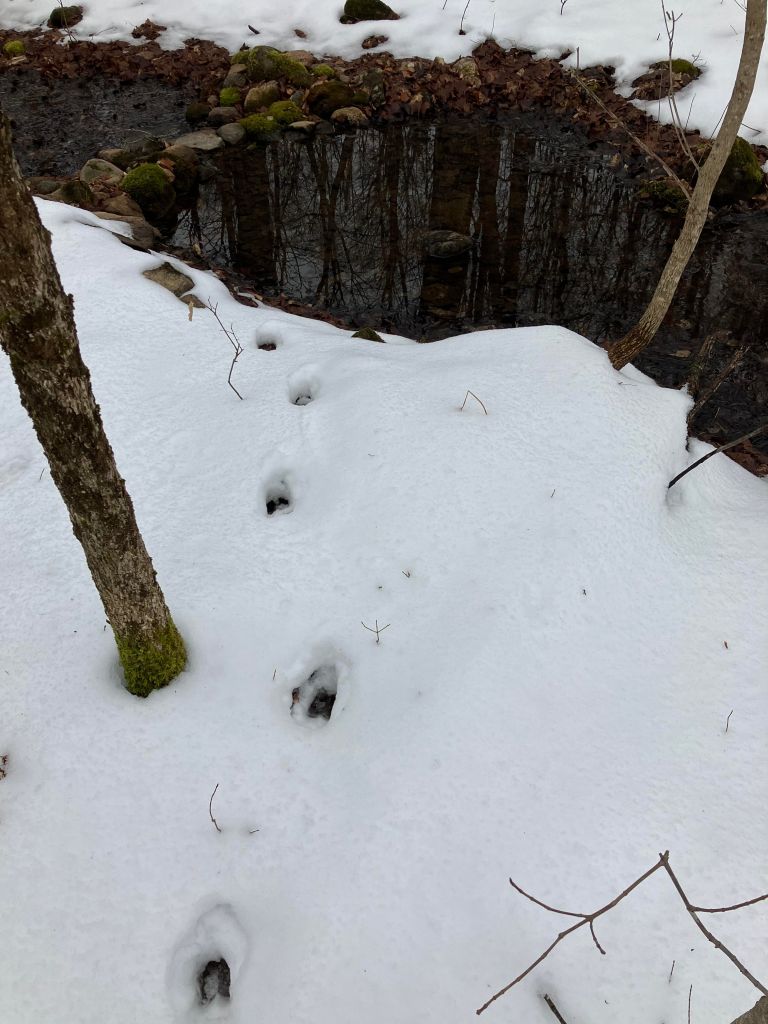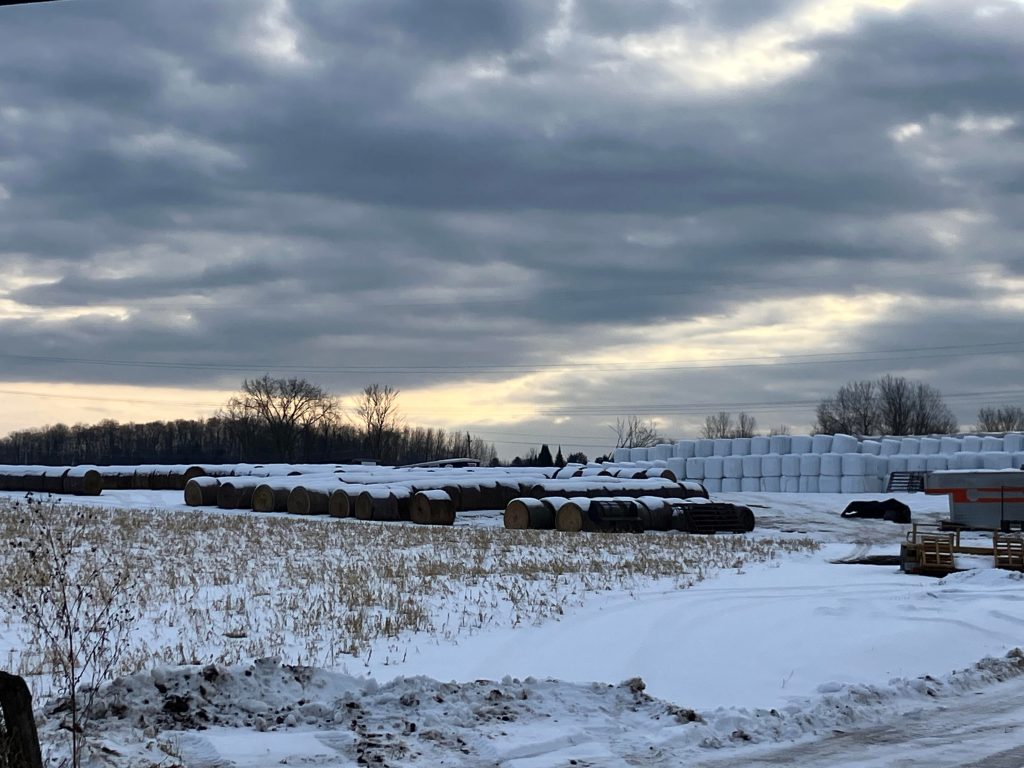The first big snowfall in Minden Hills reveals the trails of wild creatures. Going up the hill towards Kinross Creek in December, I find the paw-tracks of a coyote and the hoof-prints of a deer on my route. To those, I add the boot-prints of a late-middle-aged man.
Looking back down the hill from the hydro tower, I can see our blue cottage on Minden Lake. Cows still roam the farm field nearby, nibbling the last of the taller grass and a few shrubs. Their territory will shrink soon with more snow and colder temperatures. The farmer has put away a long line of hay bales and a mound of sileage to get the herd through the winter.
I amble over to Kinross Creek, which is still running and trickling into new ponds named after Ali and Colleen. I’d wondered what wildlife the ponds would attract over time, and it appears that their first visitor has been a thirsty deer. Its tracks run parallel to the creek, then make a sharp right turn to the edge of Ali’s pond. I hope this wild creature had a cool drink and refreshing pause on its journey.
It would be interesting to test the water in this creek. I expect it would be about as clean and fresh as you can get anywhere. The creek bubbles up from a spring surrounded by boulders, about 200 yards north of the ponds. It meanders through mixed forest and around a few thorn-apple trees then drops into a sinkhole, passing under a massive granite formation on the hydro line.
Just south of that solid rock, after disappearing completely, the creek springs up again in a tiny, grassy marsh. From the marsh, Kinross Creek burbles through Ali and Colleen’s ponds.
And when the current is strong during spring run-off, it will gush downriver over a cliff into another creek valley below, feeding Minden Lake.
Now I’m standing in the woods imagining Paddle to the Sea, the short film by Canadian artist and canoe tripper Bill Mason. His film tracks the journey of a boy’s carved canoe during spring run-off and raises flags about the perils to the natural world of industrial pollution. Kinross Creek does not have the scale of Ontario’s Great Lakes, featured in the classic film, but I find the natural world and small watercourse here to be a beautiful microcosm, and deserving of care.
With the recent snow cover, most of my stonework for the ponds is done for this year, so today I can just keep my eyes and ears open, hike about and enjoy this peaceful spot.
Only one bird keeps me company here today — I can hear the “dee-dee-dee-dee” of a chickadee up in a bare hardwood tree. I’m overheated, so take off my toque and jacket for a few minutes and munch a granola bar. My own mellow roast moment.
On my way back down the hill, I spot a group of young Blue Jays cavorting and screeching in the treetops of conifers. They will need that energy to get through the deep cold of winter in Minden Hills.
Most colours in the great outdoors are muted now, except for some brilliant-green moss on the forest floor and a hint of pink in the morning sky, next to the farmer’s hay bales.
Following the road back home, I spot two more sets of tracks — tiny ones in the snow from a squirrel making his last stash of food, and the hefty hoofprints of the cows next door.





